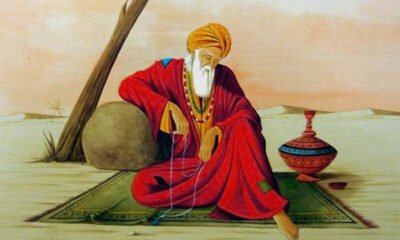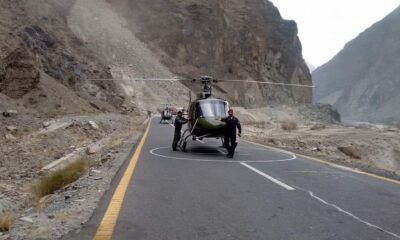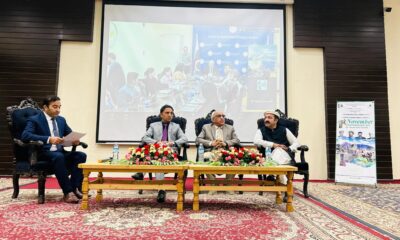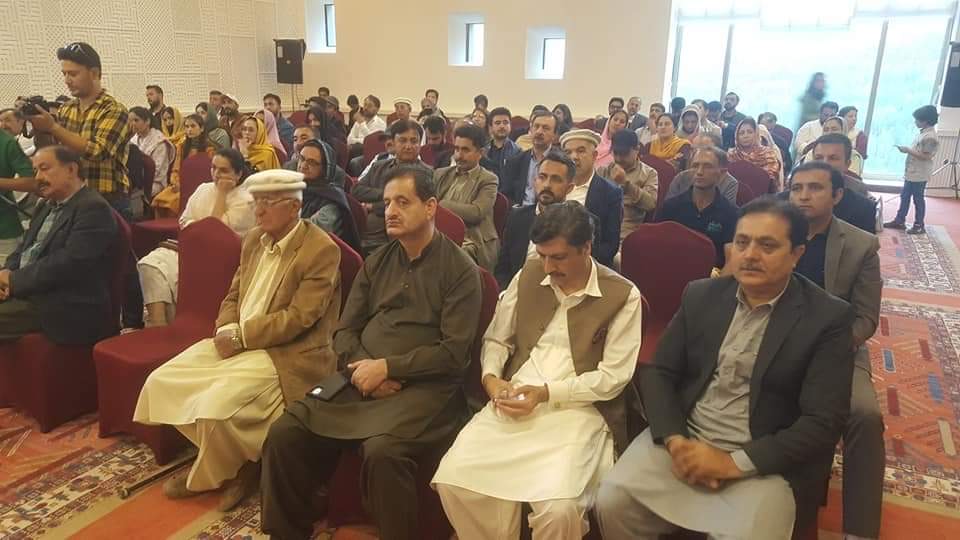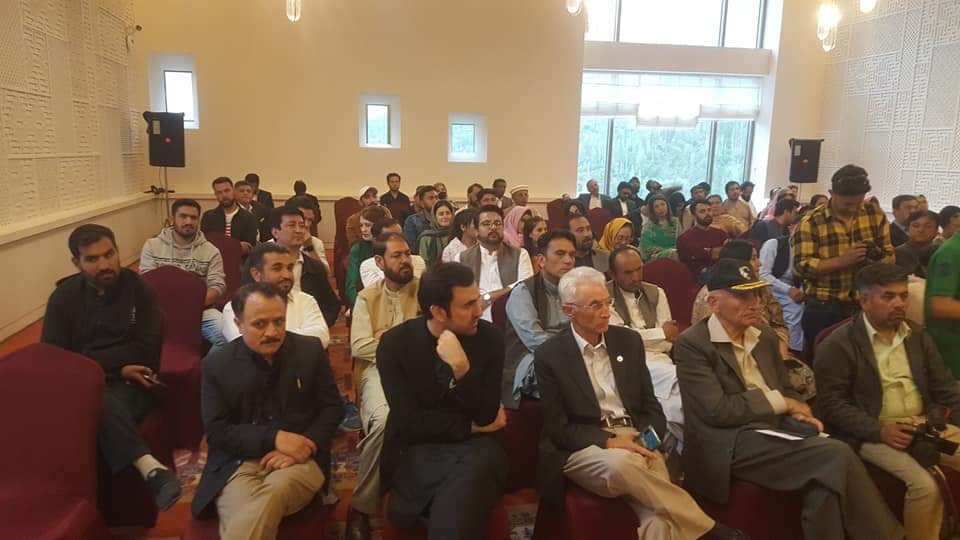Nestled in the northernmost region of Pakistan, Gilgit-Baltistan is a breathtakingly beautiful destination where the mighty Karakoram, Hindukush, and Himalayan mountain ranges meet. Together, these ranges form some of the world’s highest mountains, including K-2 and Nanga Parbat, which attract mountain enthusiasts and adventurers from around the globe. These majestic peaks are not only a source of pride for the locals but are also a major contributor to the region’s tourism industry.
Apart from its impressive mountain ranges, Gilgit-Baltistan is also renowned for its natural beauty, cultural heritage, folk music, and delicious cuisine. The region is home to some of the most spectacular landscapes in the world, with deep valleys, crystal-clear lakes, and sprawling glaciers. The locals take great pride in their rich cultural heritage and are happy to share their traditions with visitors. The region is also famous for its traditional music, with instruments such as the rubab, surnai, and ghazhek adding a unique flavor to the local culture. When it comes to food, the region’s cuisine is a delightful mix of local and international flavors, with dishes such as chapshoro, momos, and dam pukhtak being particularly popular.
Gilgit Baltistan has many tourist destinations, attracting millions of visitors annually from within the country and internationally. Some of the most popular tourist destinations include Hunza Valley, Skardu, Gilgit City, Khaplu, and Shigar Valley. Each of these destinations has its unique charm and attractions, ranging from historic forts and palaces to picturesque landscapes and vibrant markets.
In this travel blog, I will provide information and tips that every visitor should consider before planning their trip, such as accommodation options, transportation, and local customs. Whether you are a nature lover, a culture enthusiast, or a foodie, Gilgit-Baltistan has something to offer for everyone, and I hope that this travel guide will help you make the most of your visit to this stunning region.
1. Fairy Meadows
Fairy Meadows is located in the Diamer District of Gilgit-Baltistan. It is a popular camping site and offers stunning views of the nearby Nanga Parbat Mountain. The Killer Nanga Parbat is the world’s ninth-highest mountain; visitors can trek to the mountain’s base camp and experience the stunning views of the surrounding peaks and glaciers. Visitors can hike to the meadow or take a jeep ride through the scenic terrain. The meadow is also home to many species of wildflowers and is a great spot for nature photography.
2. K2 Base Camp
The K2 base camp trek is a dream adventure for thrill-seekers or outdoor enthusiasts. Located in the heart of the Karakoram Mountains range, this trek offers breathtaking views of some of the world’s highest peaks. The trek takes you through lush green valleys, snow-covered mountain passes, and glacial moraines. As you approach the base camp, you will feel a sense of awe and wonder at the sheer size and beauty of K2.
3. Basho Meadow
Basho Meadow is a picturesque destination in the Skardu region of Gilgit Baltistan. Its lush green meadows and panoramic views of the surrounding mountains make it a popular spot for adventure seekers and nature enthusiasts. Visitors can enjoy various activities such as hiking, camping, and horse riding while enjoying the area’s natural beauty. The meadow is also home to diverse flora and fauna, making it a haven for wildlife lovers. Whether you’re looking for a peaceful retreat or an action-packed adventure, Basho Meadow is worth a visit
4. Deosai National Park
Deosai National Park is located in the Skardu and Astore District of Gilgit-Baltistan. It is the second-highest plateau in the world and is known for its beautiful landscape and wildlife. Visitors can see various species of animals, such as the Himalayan brown bear, Himalayan ibex, snow leopard and the majestic view of the Sheosar Lake. The park is also home to many species of birds, such as the golden eagle and Himalayan snowcock.
5. Sarfaranga Cold Desert
Sarfaranga Cold Desert is the world’s highest cold desert and a stunningly beautiful destination in the Shigar District of Gilgit-Baltistan. Majestic snow-capped mountains surround the vast desert. The desert is known for its unique landscape, which features dunes, rocky outcrops, and barren terrain. Visitors can enjoy camel rides, jeep safaris, and camping under the stars.
6. Baltoro Glacier
Baltoro Glacier is one of the longest glaciers in the world and is located in the Karakoram Mountains range of Gilgit-Baltistan. Visitors can trek to the glacier and experience the stunning views of the surrounding peaks, such as K2 and Broad Peak. The trek can take several days and requires proper planning and equipment.
7. Rakaposhi Base Camp
Rakaposhi Base Camp, located in the Nagar District of GB, is a mesmerizing destination for adventure enthusiasts and nature lovers. Located in the heart of the Karakoram range, the base camp offers breathtaking views of the majestic Rakaposhi peak, which stands at a towering height of 7,788 meters. Trekking to the base camp is an unforgettable experience that promises to leave you with memories that will last a lifetime.
8. Shangrilla and Upper Kachura Lake
Shangrilla is a beautiful resort located in Skardu. It offers breathtaking views of the Karakoram Mountains range, lush green meadows, and a serene lake. The resort is surrounded by Lower Kachura Lake, a crystal-clear water body that adds to the place’s scenic beauty. Visitors can enjoy boating, making it a popular tourist spot.
The Upper Kachura Lake is a must-visit destination for nature lovers. The lake is situated at an altitude of 2,500 meters and is surrounded by dense forests and snow-capped mountains. The blue-green water of the lake is a sight to behold, and visitors can take a boat ride to explore its beauty. The lake is also a popular spot for fishing, and visitors can try catching brown trout.
Overall, Shangrilla and Upper Kachura Lake offer a perfect escape from the hustle and bustle of city life and are a must-visit for anyone traveling to Skardu
9. Masror Rock
Masoor Rock Skardu is a stunning natural wonder in the Skardu District of Gilgit-Baltistan. It is a massive rock formation that offers breathtaking views of the surrounding landscape. The rock is a popular destination for adventure seekers and rock climbers who come worldwide to challenge themselves on its vertical face. For those who prefer a more leisurely experience, the rock can also be enjoyed from a distance while taking in the beauty of the surrounding area.
10. Shandur Pass
Shandur Pass is a high mountain pass between the Chitral District of Khyber Pakhtunkhwa and the Ghizer District of Gilgit-Baltistan. It is known for its annual Shandur Polo Festival, held in the summer, and is a great way to experience local culture and sports.
11. Rainbow Lake
Rainbow Lake in Astor is a stunning destination that offers visitors an unforgettable experience. The lake is in the heart of the Ocala National Forest, surrounded by breathtaking natural beauty. With crystal clear water and various fish species, it is a popular spot for fishing and boating enthusiasts. Additionally, the area around the lake is perfect for hiking and camping, making it a great destination for outdoor lovers
12. Khunjerab Pass
Khunjerab Pass is a high mountain pass located on the border between Pakistan and China. It is the world’s highest paved international border crossing, known for its stunning scenery and challenging terrain. Visitors can enjoy the stunning views of the surrounding peaks and glaciers and experience the unique culture of the local communities.
13. Attabad Lake
Attabad Lake is located in the Hunza District of Gilgit-Baltistan. It was formed in 2010 after a landslide blocked the Hunza River. The lake is known for its beautiful turquoise color and is a popular spot for boating and fishing. Visitors can also enjoy the stunning views of the surrounding peaks, such as Passu Cones and glaciers.
14. Khamush Waterfall
Khamush waterfall, located in the Kharmang district of Gilgit-Baltistan, is a hidden gem waiting to be discovered by adventurous travelers. The waterfall cascades down from a height of 200 feet and offers stunning views of the surrounding mountains and forests. Visitors can enjoy a refreshing swim in the cool, clear water or relax and soak in the area’s natural beauty. With its tranquil atmosphere and picturesque setting, Khamush waterfall is a must-visit destination for nature lovers and thrill-seekers alike
15. Historical Forts
Gilgit Baltistan is a region rich in history and culture, with many historical forts that offer a glimpse into the past. One of the most famous forts is Baltit Fort, located in the Hunza Valley, which dates back to the 8th century. Another impressive fort is the Altit Fort, also located in the Hunza Valley and dates back to the 11th century. The historic Khaplu Palace, located in the Khaplu Valley, is another must-visit site, with a rich history dating back to the 17th century.
Kharphocho Fort, located in the Skardu Valley, is another popular attraction. Finally, the Shigar Fort, located in the Shigar Valley, is another historical gem that dates back to the 17th century and is now converted into a heritage hotel.
16. Skardu Valley
Skardu is the capital of the Baltistan Division and is located on the banks of the Indus River. It is known for its scenic beauty and adventure sports. Visitors can go trekking, hiking, and mountaineering in the nearby mountains, such as K2 and Broad Peak. They can also explore the historic Kharpocho Fort on a hill overlooking the city and many more stunning places waiting for tourists.
17. Hunza Valley
The Hunza Valley is one of the region’s most picturesque valleys. It is known for its breathtaking landscapes, crystal-clear rivers, and stunning snow-capped mountains. The valley is also famous for its apricot blossom, which blooms in spring. Visitors can enjoy trekking, hiking, mountaineering in the Hunza Valley and exploring the traditional Baltit and Altit forts.
18. Naltar Valley
The Naltar Valley is located in the Gilgit District of Gilgit-Baltistan. It is known for its scenic beauty and skiing facilities. Snow-capped mountains surround the valley, home to many small lakes. Visitors can enjoy skiing in the winter season and can also go hiking and trekking in the summer season.
19. Kachura Valley
Kachura valley is a stunning destination located in the Gilgit-Baltistan region of Pakistan. The valley is known for its crystal-clear blue waters, beautiful landscapes, and scenic views of the surrounding mountains. Soq Valley of the Kachura is a peaceful place with a soothing vibe. Visitors can enjoy various outdoor activities such as trekking, camping, and boating. The valley is a must-visit destination for nature lovers and adventure enthusiasts.
20. Shigar Valley
Shigar Valley is located in the Baltistan Division of Gilgit-Baltistan. It is known for its historic Shigar Fort, which has now been restored and turned into a hotel where visitors can experience the traditional Balti architecture and culture. The valley is also famous for its fruit orchards and popular for camping and trekking. The valley is also known as the land of mighty mountains, home to four of the fourteen highest peaks in the world, with heights above 8000 meters.
21. Astore Valley
Astore Valley is located in the Diamer Division of Gilgit-Baltistan. It is known for its scenic beauty and is a popular spot for trekking and camping. Visitors can explore the nearby Rama Lake, surrounded by snow-capped mountains, or the Chilam Joshi Festival celebrated in the summer, a great way to experience the local culture. Domel and Minimarg will give you the vibe of heaven on earth.
22. Phander Valley
Phander Valley is located in the Ghizer District of Gilgit-Baltistan. It is known for its beautiful Phander Lake, surrounded by lush green meadows and snow-capped mountains. Visitors can enjoy fishing in the lake, and the valley is also a popular spot for camping and trekking.
23. Nagar Valley
Nagar Valley is a scenic destination located in the Gilgit-Baltistan region. The valley is known for its stunning landscape, pristine lakes, and lush green forests. The valley is a paradise for nature lovers and adventure seekers, offering trekking, camping, and rock-climbing activities. The locals’ vibrant culture and hospitality add to Nagar Valley’s charm.
24. Khaplu Valley
The Khaplu Valley is located in the Ghanche District of Gilgit-Baltistan. The valley is famous for its ancient buildings and monuments, such as the Khaplu Palace, built in the 19th century. Visitors can also explore the Chaqchan Mosque, one of the region’s oldest mosques, and the Khaplu Sailing, a popular picnic spot where you can taste fish foods.
25. Gilgit City
Gilgit City is the administrative center and the capital of the Gilgit-Baltistan region. It is located on the banks of the Gilgit River and is known for its lively bazaars and vibrant culture. Visitors can explore the historic Kargah Buddha, a 7th-century rock carving of Buddha, and the Gilgit Fort, built in the 16th century. The city is also a great base for exploring nearby tourist destinations.

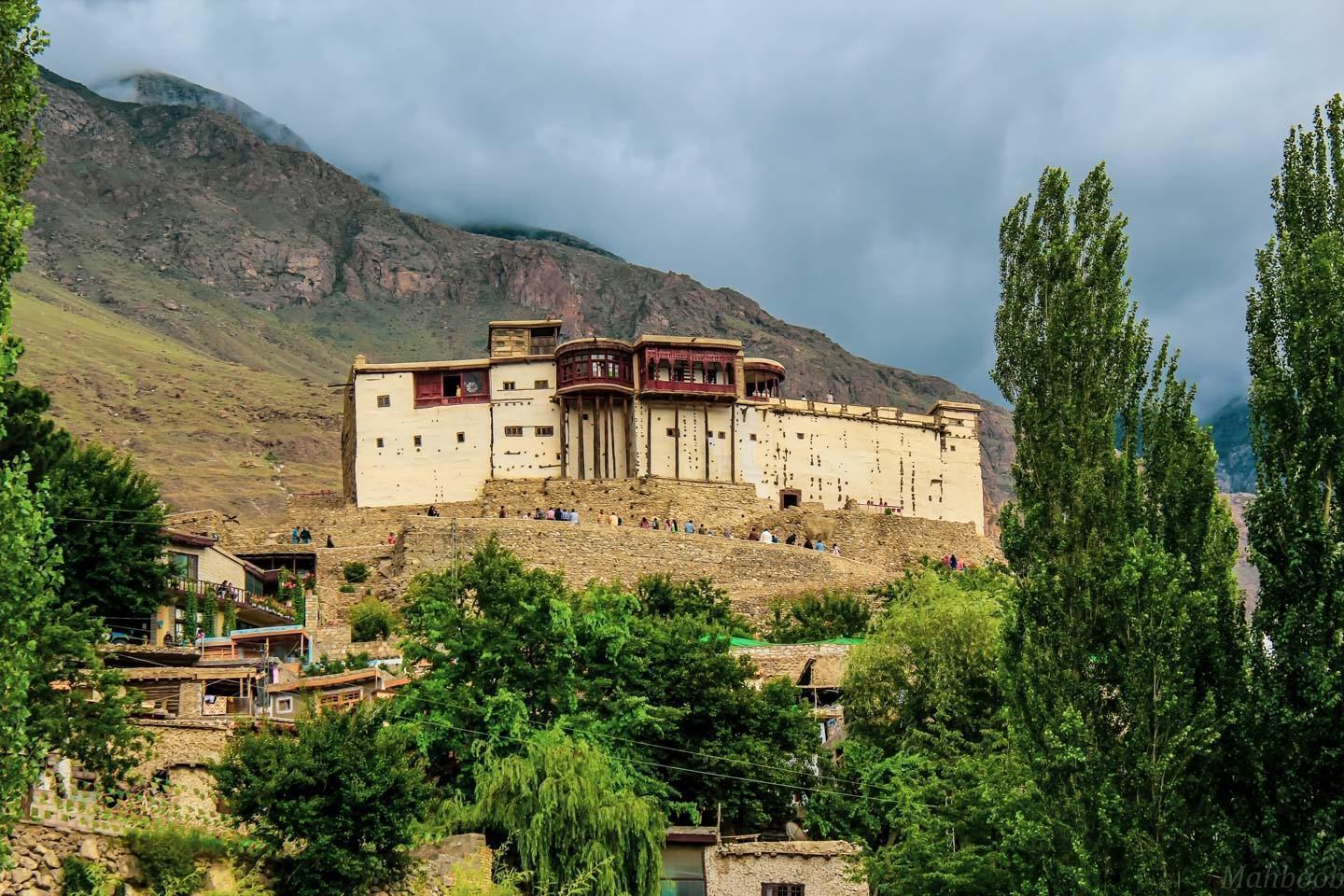

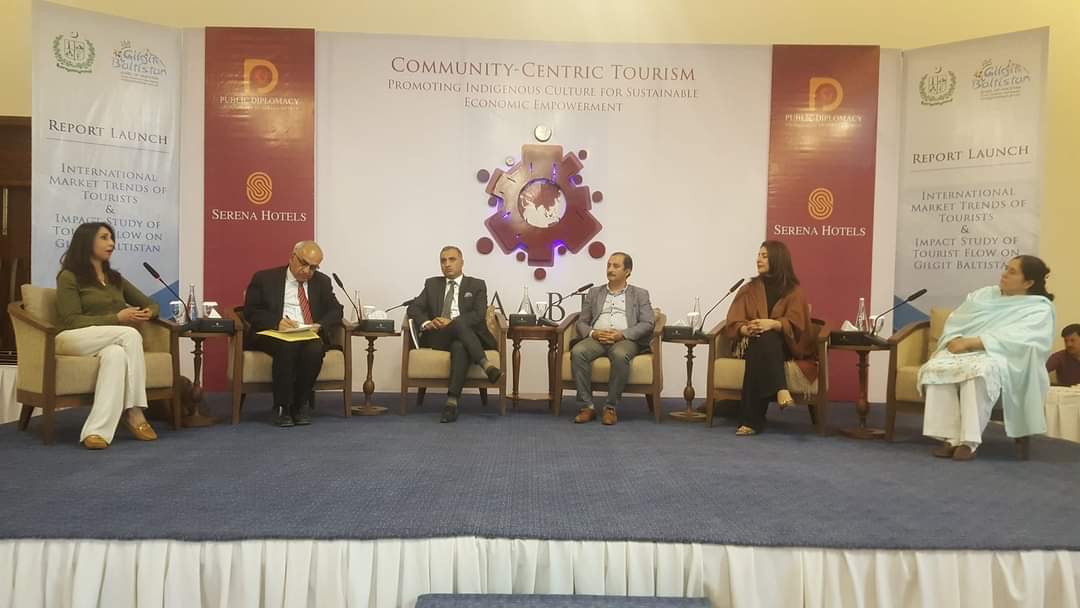

 Tourism3 years ago
Tourism3 years ago
 Arts, Culture & Heritage2 years ago
Arts, Culture & Heritage2 years ago
 KIU Corner2 years ago
KIU Corner2 years ago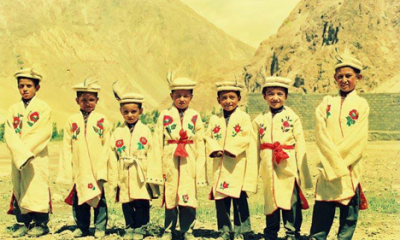
 Arts, Culture & Heritage2 years ago
Arts, Culture & Heritage2 years ago
 KIU Corner2 years ago
KIU Corner2 years ago
 Opinion3 years ago
Opinion3 years ago
 Arts, Culture & Heritage3 years ago
Arts, Culture & Heritage3 years ago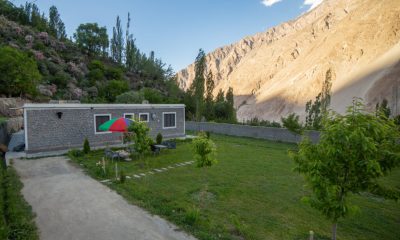
 Arts, Culture & Heritage2 years ago
Arts, Culture & Heritage2 years ago
